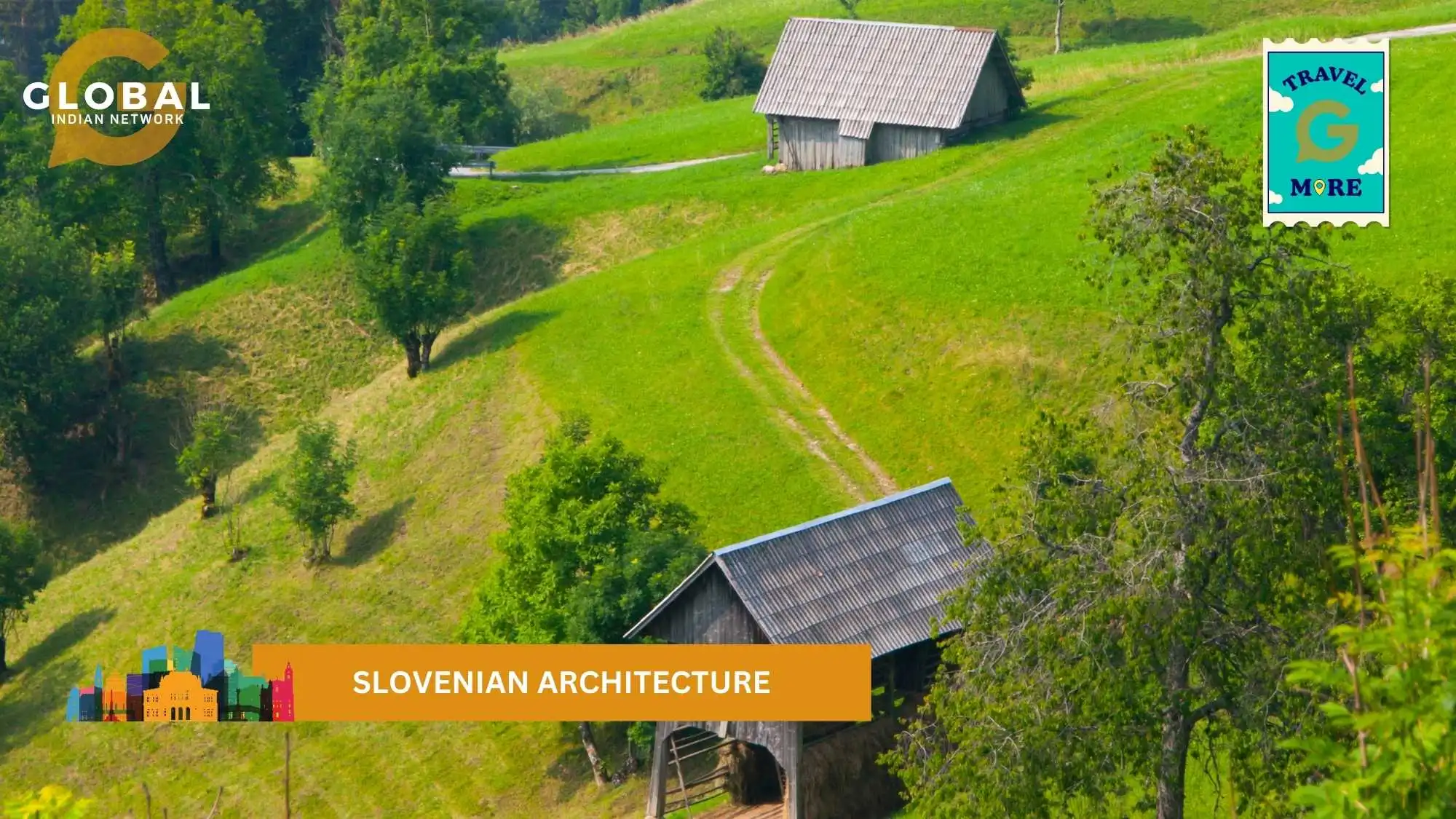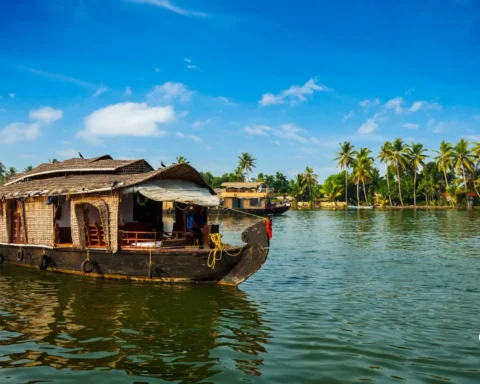Architecture, nature, adventure, and culture are generally the most considered reasons for travel. Slovenia, located in central Europe, offers all of the above. Yet, the architecture is the one that catches the eye first. The purpose of this piece is to take a close look into the unique style of Slovenian architecture.
Slovenian architecture reflects the country's rich history and cultural identity. From historic buildings to modern structures, Slovenia's architectural landscape is a testament to its unique heritage and creative spirit.
Enjoy the trip!
Table of Contents
Slovene Architects
Slovenia has been home to many influential architects who have left their mark on the country's built environment. Notable figures such as Jože Plečnik and Max Fabiani have played a significant role in shaping Slovenian architecture.
Historic Slovenian Architecture
Slovenian architecture is characterised by its diverse styles, reflected in its beautiful buildings. The country's heritage reflects neighbouring regions' influences and unique local traditions.
Ljubljana Castle: A historic castle on a hill, it has elements dating back to the 15th century, offering panoramic views of the Slovenian capital city and housing a museum and cultural events.
Prešeren's House: The former home of the Slovene poet France Prešeren, now a museum dedicated to his life and work, is located in the heart of Ljubljana. It is a historic building that houses the Slovenian Academy of Sciences and Humanities. The architectural style of Prešeren's House is a blend of Baroque, Neoclassical, and Romantic elements, showcasing the rich architectural heritage of Slovenia.
Town Hall: Situated in the central square of Ljubljana, the Town Hall is a magnificent building open to the public for guided tours. The landmark was designed by Gregor Maček in the Baroque style and completed in 1718.
Ptuj Castle: One of the oldest castles in Slovenia, featuring a rich history and housing a museum with extensive collections of art, armour, and artefacts. It is a medieval fortress located in the town of Ptuj, Slovenia. Parts of the castle's structure date back to the 12th century and offer panoramic views of the surroundings. The castle has undergone various renovations and reconstructions over the centuries, blending Romanesque, Gothic, and Renaissance architectural styles.
Modern Architecture of the 20th century
Several architectural projects in Slovenia have gained international acclaim for their building design innovation and cultural relevance. These projects contribute to the country's architectural identity and global recognition. Some well-known buildings of the 20th century in Slovenia and their architects include:
Slovenian Parliament Building, Ljubljana City: The Slovenian Parliament Building, situated in the heart of Ljubljana, is a four-story edifice designed by architect Vinko Glanz in the mid-20th century. Construction occurred between 1954 and 1959 at the northeast corner of Trg Republike (Republic Square). The building has a distinguished facade facing Revolution Square and is structured as a freestanding cube, exuding a monumental and impactful presence. While its exterior may not be considered aesthetically exceptional, the Parliament Building holds great architectural stature as a symbol of democracy in Slovenia.
Nebotičnik Skyscraper, Ljubljana: The Nebotičnik Skyscraper, designed by Vladimir Šubic and built from 1930-1933, is an excellent example of the Art Deco style, which was popular in Europe at the time. The building features a distinctive facade adorned with geometric patterns and floral motifs, reflecting the influence of Slovenian folk art. The skyscraper was initially constructed to house the Bank of Slovenia, which played a significant role in the country's economic development.
Cooperative Business Bank Building, Ljubljana: Designed by Ivan Vurnik and built in 1921-1922, the building is a prime example of the Secession style, which was popular in Central Europe then. The building features a distinctive facade adorned with colourful geometric patterns and floral motifs, reflecting the influence of Slovenian folk art. The building was originally constructed to house the Cooperative Business Bank, which was established to support local farmers and small businesses.
Central Market: Located in Ljubljana, this iconic architectural landmark dates back to the early 20th century. The market was designed by the architect Jože Plečnik and is renowned for its unique blend of architectural styles, including Art Nouveau and modernist influences. The market is a vibrant hub of activity, offering a wide variety of fresh produce, local delicacies, and handmade goods, and it remains a beloved destination for both residents and visitors.
The city core of Slovenia is a testament to the country's rich history and cultural heritage, with notable buildings offering visitors a glimpse into the nation's past and present.
Churches
Slovenia is home to many churches, each with its own architectural significance. These religious structures not only serve as places of worship but also stand as architectural marvels, reflecting the country's spiritual heritage.
Traditional Slovenian churches are known for their unique architectural features and rich cultural heritage. Some notable aspects of traditional Slovenian churches include:
Distinctive design: Traditional Slovenian churches often feature a distinctive design, combining Gothic, Baroque, and Renaissance architectural styles. The churches are typically adorned with intricate carvings, frescoes, and other decorative elements, reflecting local culture and artistic traditions.
Bell towers: Bell towers are a common feature of traditional Slovenian churches, often serving as a focal point of the building. The towers are typically tall and slender, with a bell or bells that ring out across the surrounding landscape.
Interior design: The interiors of traditional Slovenian churches are often characterised by their ornate decoration and religious iconography. The churches typically have a nave, an altar, and a choir loft, with seating for the congregation.
Religious significance: Traditional Slovenian churches are an essential part of the country's religious and cultural heritage, serving as places of worship, pilgrimage, and community gathering. Many of these churches have been continuously used for centuries and are considered sacred sites by the local population.
These traditional architectural features, along with their religious and cultural significance, contribute to the unique charm and enduring appeal of Slovenia.
Houses
Traditional Slovenian houses, such as the iconic "hiša," are emblematic of the country's rural architecture. These charming dwellings are characterised by their distinctive design and use of local materials. Traditional Slovenian houses are typically constructed using natural materials such as wood and stone, combining post and beam construction. They feature simple facades, balconies, and porches and have open floor-plan interiors. Sustainable design elements are often incorporated, and regional variations in architectural styles are observed across different regions of Slovenia.
Building and Identity
The construction industry in Slovenia has witnessed significant development, with a focus on sustainable and innovative building practices. Slovenian buildings showcase a blend of tradition and modernity from residential to commercial structures. Slovenian architecture plays a vital role in preserving the nation's cultural identity. The built heritage serves as a visual narrative of Slovenia's past, present, and aspirations for the future.
Studios and Architectural Offices
Architectural studios in Slovenia are at the forefront of creative exploration and design excellence. These studios serve as incubators for architectural innovation and are instrumental in shaping the country's built environment.
Architectural offices in Slovenia are instrumental in translating design concepts into tangible structures. These Slovenian architects play a crucial role in realising architectural visions and advancing the built environment.
The nation's architecture is a captivating fusion of tradition, innovation, and cultural pride. From the timeless allure of historic buildings to the contemporary vision of modern architects, Slovenia's architectural landscape continues to inspire and captivate enthusiasts worldwide.
Bridges
Slovenia is known for its enchanting bridges that combine architectural innovation with the natural beauty of the country. The Tromostovje, or Triple Bridge, in the heart of Ljubljana, the capital city, is an excellent example of Slovenian bridge architecture. This unique bridge ensemble, designed by Jože Plečnik, seamlessly integrates the old and the new, reflecting the city's rich history and contemporary spirit. Another significant structure is the Dragon Bridge, adorned with iconic dragon statues symbolising power and strength. These bridges not only serve as important transportation links but also stand as architectural landmarks, showcasing Slovenia's unique design prowess.
Sustainable Architecture
Slovenia has a rich history of sustainable architecture and has been home to several notable sustainable architecture projects. Some of these projects include:
Eco-villages: Slovenia is known for its eco-villages, which are sustainable settlements that combine architecture, nature, and culture. These villages showcase the use of local materials, energy-efficient design, and environmentally friendly technologies.
Kozica House: Designed by the renowned architect Edvard Ravnikar, the Kozica House is a prime example of sustainable architecture in Slovenia. The house features a green roof, solar panels, and a rainwater collection system, making it an energy-efficient and eco-friendly home.
Ljubljana Urban Regeneration: As part of the "4 returns, 3 zones, 20 years: A Holistic Framework for Ecological Restoration by People and Business for Next Generations" initiative, Slovenia has been working on restoring degraded ecosystems and promoting sustainable development in urban areas. This project demonstrates how stakeholder collaboration can yield multiple returns, including social, natural, and financial capital gains.
Bio-architecture: Slovenian architects have been exploring using sustainable materials, energy-efficient design, and environmentally friendly technologies in their projects. One notable example is the use of wooden structures and materials in residential and public buildings, which contribute to the overall sustainability of construction.
These sustainable architecture projects in Slovenia demonstrate the country's commitment to environmental conservation and the integration of beautiful architecture and nature.
Conclusion
Slovenian architecture is a testament to the country's rich cultural heritage and creative ingenuity. From the grandeur of historic landmarks to the avant-garde designs of contemporary architects, Slovenia's built environment is a source of national pride and global fascination. The architectural style and legacy of Slovenia continue to evolve, reflecting the nation's enduring commitment to innovation, sustainability, and cultural preservation.
FAQs
Is the City Centre car-free?
Yes, Ljubljana, the capital of Slovenia, has a car-free city centre. This initiative has existed for over a decade, making Ljubljana the only European capital with a completely car-free city center. The pedestrianisation process in the city has transformed more than 10 hectares into a pedestrian area. Delivery vehicles are permitted in the early mornings to service businesses in the city center, balancing accessibility and a car-free environment.
What is the Krizanke Summer Theatre known for?
The theatre is a former monastery in Ljubljana, Slovenia. Architect Jože Plečnik rebuilt it in the 1950s as a summer theatre. It hosts various cultural events and showcases Slovenia's culture.
Which is a famous cathedral in Slovenia?
The Ljubljana Cathedral is a Baroque cathedral built in the 13th century and renovated in the 18th century. It has a green dome and a bell tower with city views. It is open for religious and cultural visits and has many artworks by Slovenian artists.











[…] period includes the Indus Valley Civilization, which dates to 2500 BCE. The architecture of this period was primarily made of wood and mud, which did not survive due to rotting and […]